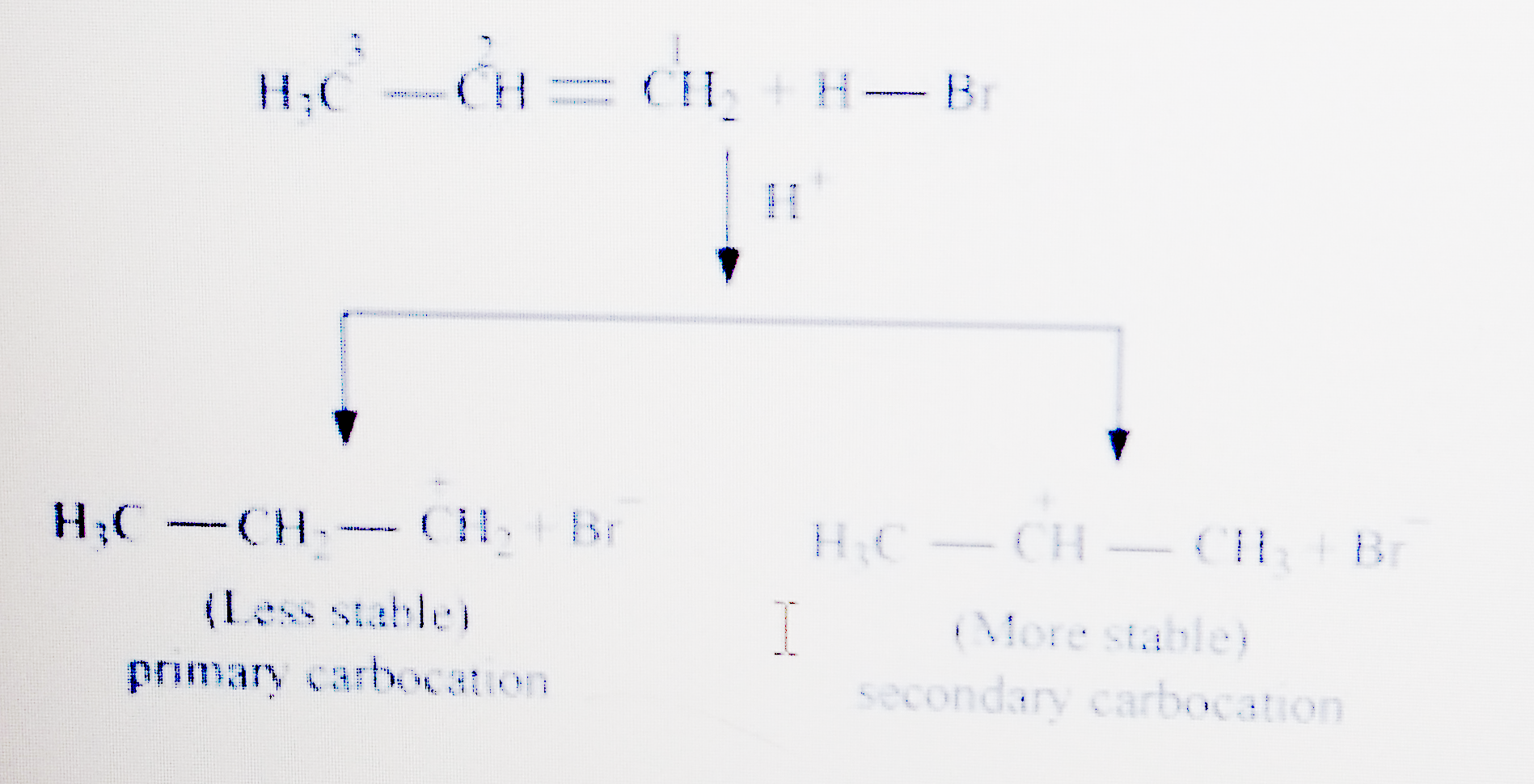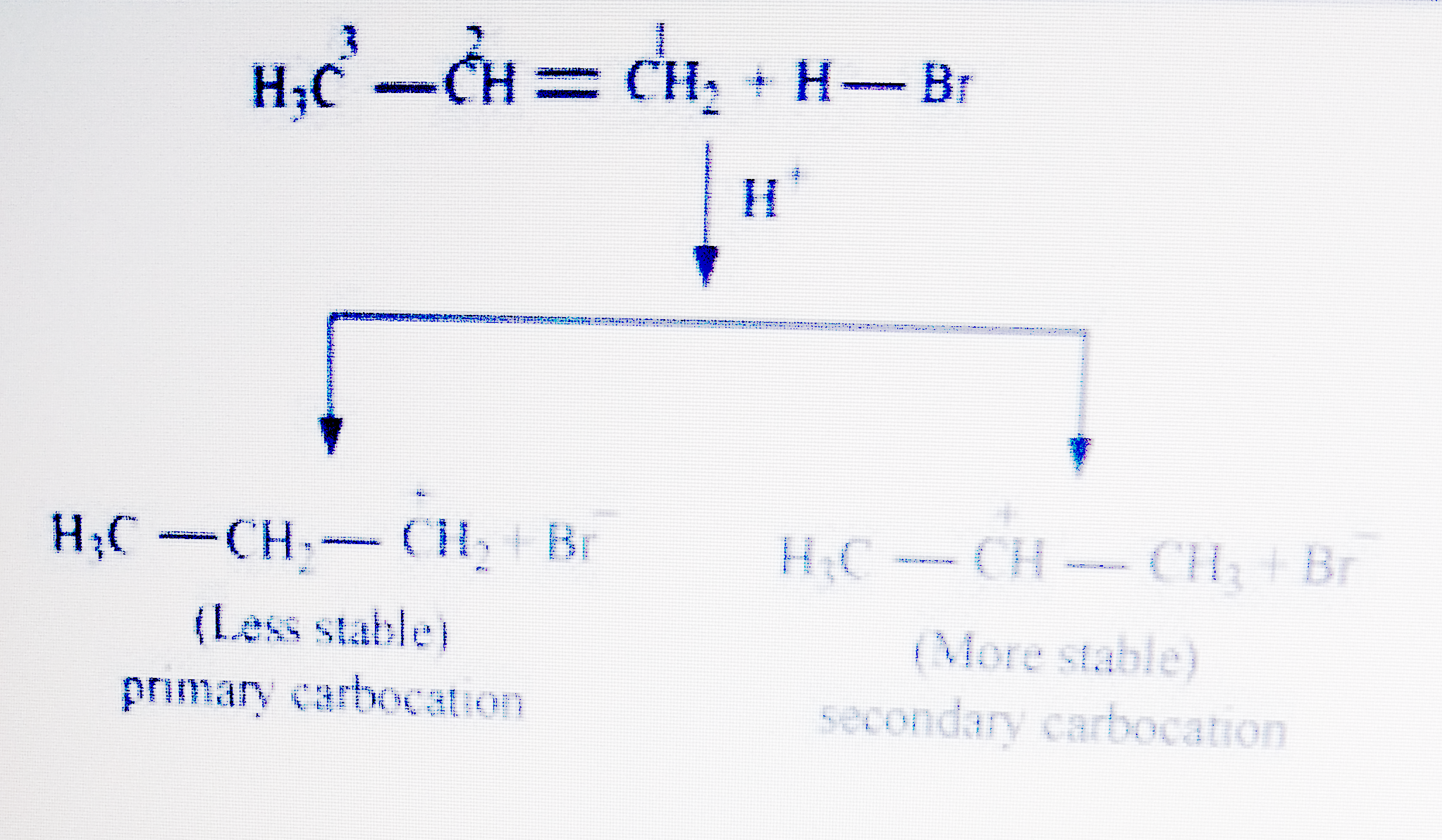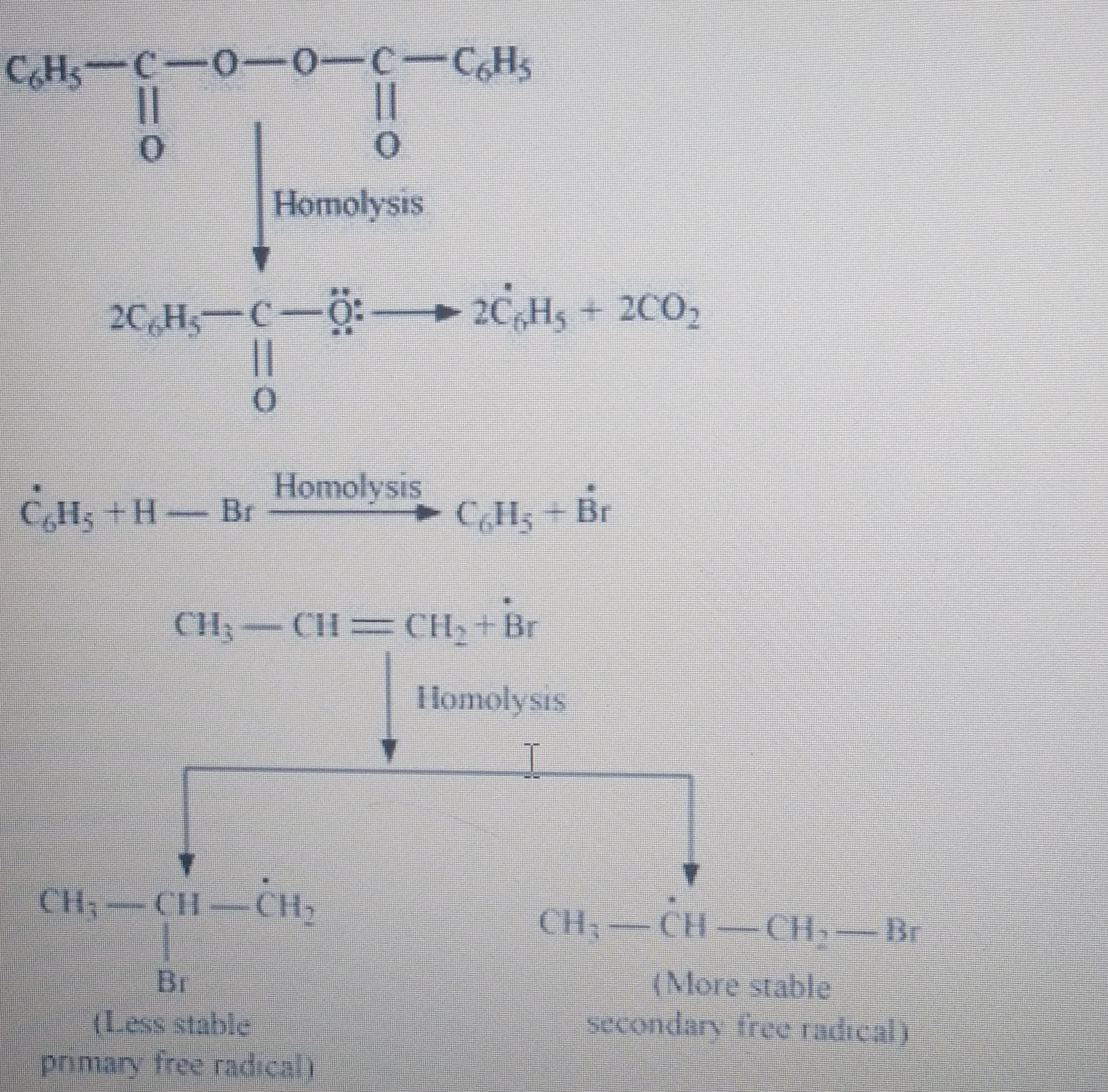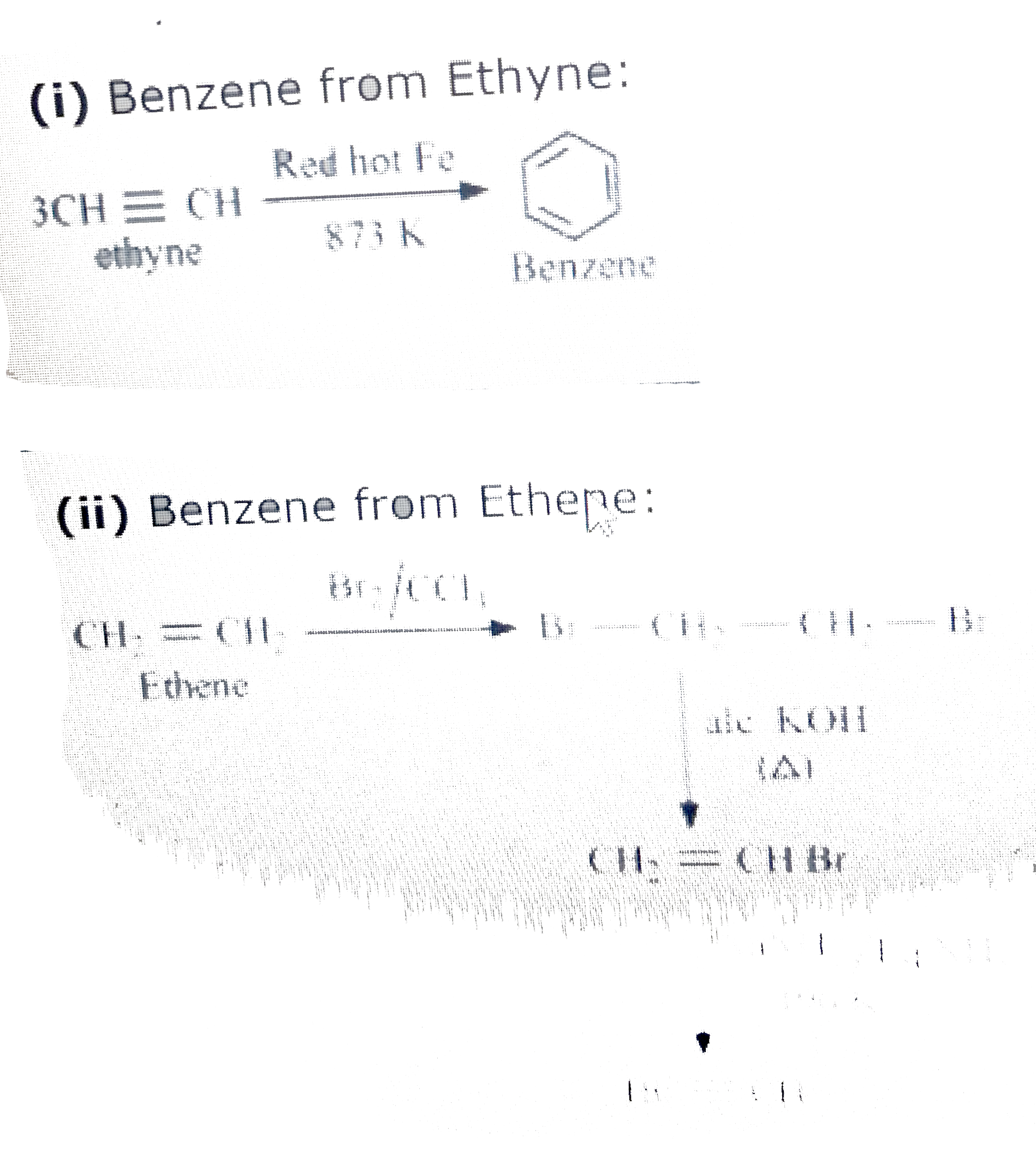Addition of HBr to propene yields 2-bromopropane, while in the presence of benzoyl peroxide, the same reaction yields 1-bromopropane. Explain and give mechanism.
The correct Answer is:Refer to addition reaction of Hbr to unsymmetrical alkenes in the text.
Addition of HBr to propene is an example of an electrophilic substitution reaction. Hydrogen bromide provides an electrophile, H+. This electrophile attacks the double bond to form 1∘ and 2∘ carbocations as shown:

Secondary carbocations are more stable than primary carbocations. Hence, the former predominates since it will form at a faster rate. Thus, in the next step, Br– attacks the carbocation to form 2 – bromopropane as the major product

This reaction follows Markovnikov’s rule where the negative part of the addendum is attached to the carbon atom having a lesser number of hydrogen atoms.In the presence of benzoyl peroxide, an addition reaction takes place anti to Markovnikov’s rule. The reaction follows a free radical chain mechanism as:

Secondary free radicals are more stable than primary radicals. Hence, the former predominates since it forms at a faster rate. Thus, 1 – bromopropane is obtained as the major product.

In the presence of peroxide, Br free radical acts as an electrophile. Hence, two different products are obtained on addition of HBr to propene in the absence and presence of peroxide.
Topper's Solved these Questions
Similar Questions
Knowledge Check
Assertion: Addition of HBr to propene yields 2-bromopropane but in presence of a peroxide it yields 1-bromopropane.
Reason: When reaction is carried out in the presence of a peroxide it follows free radical mechanism, 2∘ free radical is more stable than 1∘ free radical.AIf both assertion and reson are true and reason is the correct explanation of assertionBIf both assertion and reason are true but reason is not the correct explanation of assertion.CIf assertion is true but reason is false.DIf both assertion and reason are false.The reaction intermediates involved in the addition of HBr to propene in the presence of an organic peroxide are
(a) free radicals
(b)carbocations
(c)carbanions
(d)carbenesAfree radicalsBcarbocationsCcarbanionsDcarbenes
Why is in the presence of diethyl peroxide, the addition of HBr to propene is against Markownikoff's rule?
View SolutionReaction of HBr with propene in the presence of peroxide gives :-
View SolutionThe reaction of HBr with 1-propene in the presence of peroxides will produce primarily
View SolutionReaction of HBr with propene, in absence of organic peroxides, gives 1-bromopropane as the major product.
View Solutionsp2,sp3, polar, non-polar, gem, vicinal, 2, 3, Grove's, Darzen, Markownikov's rule, Kharasch, increase, decrease
Addition of HBr to propene, in presence of organic peroxides, gives 1-bromopropane as the major product. It is called ....... effect.
View SolutionIn the presence of peroxide addition of HBr to propene takes place according to anti Markownikoff's rule but peroxide effect is not seen in the case of HCl and HI. Explain.
View Solution
